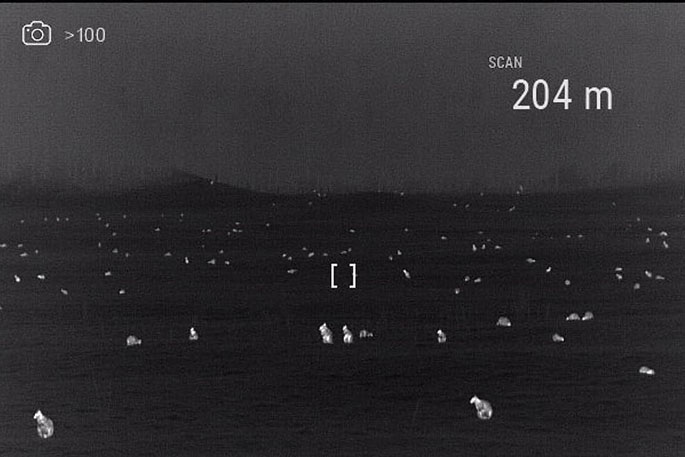Kilometres of fence line has been laid in Rotorua as part of an attempt to halt potentially millions of dollars in wallaby damage.
Dama wallabies have called Rotorua home for more than 100 years but unless they are controlled, they could cause an estimated $16.5 million in damage by 2025 in the North Island, according to Biosecurity New Zealand.
The agency leads the Tipu Mātoro National Wallaby Eradication Programme, working with councils, iwi, landowners and other groups.
Wallabies feed on native flora important to native wildlife as well as compete with stock on farmland for pasture. They also damage pine and eucalyptus seedlings on plantations.
Of the 962 wallaby sightings reported in the Bay of Plenty in the last two-and-a-half years, 764 were in the Rotorua area.
There are an estimated one million wallabies in the country - including dama wallabies in the North Island - but how many are in the region is not known.
A project began at the end of last year to build a 12.5km wallaby-proof fence aimed to keep the pests in a limited area to stop their spread.
Construction of 7.3km of fence has finished and the full 12.5km is expected to be done by mid-September.
Bay of Plenty Regional Council's North Island wallaby programme manager Davor Bejakovich says the fence supports the aim to have all wallabies within designated containment areas by 2025.
The full containment area in the North Island is about 260,000 hectares, mostly in the Rotorua district.
The fence under construction runs from Waipa to Lake Rotokakahi and is designed to help keep wallabies inside the containment area at the Whakarewarewa Forest, as well as to stop re-infestation of land to the south where wallaby control measures have been carried out.
The area south of the fence will be surveyed to measure its success.
 The wallaby fence in Whakarewarewa Forest. Photo: Supplied
The wallaby fence in Whakarewarewa Forest. Photo: SuppliedThe wallaby fence is being constructed in the Whakarewarewa Forest in Rotorua.
"While the long-term aspiration of the programme is to achieve a wallaby-free Aotearoa, it will take the continued efforts of programme partners, landowners and the wider community to achieve this goal," says Bejakovich.
The short-term focus is to find and control wallabies outside of the containment area.
Then the focus will shift to those inside it and reducing populations in size and range.
A Central North Island Regional Coordination Group, which consisted of representatives from iwi, community care groups, Forest and Bird, forestry and Federated Farmers, met quarterly to provide feedback on the programme's operations and progress.
Bejakovich says landowners, including many farmers, support the programme's goals.
Reporoa dairy farmer and Federated Farmers Rotorua/Taupō provincial president Colin Guyton says he has never seen any of the Aussie invaders as far south as his farm but he worries about if that day should come.
 Federated Farmers Rotorua/Taupō provincial president Colin Guyton. Photo: Andrew Warner
Federated Farmers Rotorua/Taupō provincial president Colin Guyton. Photo: Andrew Warner"They really are a problem. We should have gotten on top of them a lot earlier maybe, but at least we are doing something now."
They are similar to rabbits in how devastating they can be in how much they eat, he says, but their nocturnal tendencies make them a challenge to tackle.
On social media last year, the Bay of Plenty Regional Council shared an image of glowing eyes in a dark Rotorua paddock, silhouettes of wallabies as far as the eye could see.
Guyton says he was "blown away by it".
"I didn't think it could be New Zealand… that was concerning."
He had been sceptical of the fence at first but has since been convinced by the regional council it's the way to go and believses it will make a "big difference".
Biosecurity New Zealand readiness and response services director John Walsh says as a significant pest and threat, wallabies are classified as an "Unwanted Organism" under the Biosecurity Act.
It's illegal to have, hold, move or transport wallabies in New Zealand without a specific permit.
"Those who do can face significant penalties. As an individual, you can be fined up to $100,000 and/or sent to prison for up to five years."
He says there has been an increase in reported sightings recently on the back of an awareness campaign drawing attention to the existence of wallabies and the damage they did.
The campaign calls on New Zealanders to report any wallaby sightings or signs of their paw prints or poo to reportwallabies.nz.
Public Interest Journalism funded through NZ On Air.




1 comment
Wallabys in Tauranga
Posted on 07-08-2023 12:59 | By SML
The powers-that be ought to check out the valley between the Merivale end of Courtney Road and Mitre10 Mega. A friend who lives across the valley from M10 said she had found a long-legged rat... but no, it was a young wallaby.
Leave a Comment
You must be logged in to make a comment.